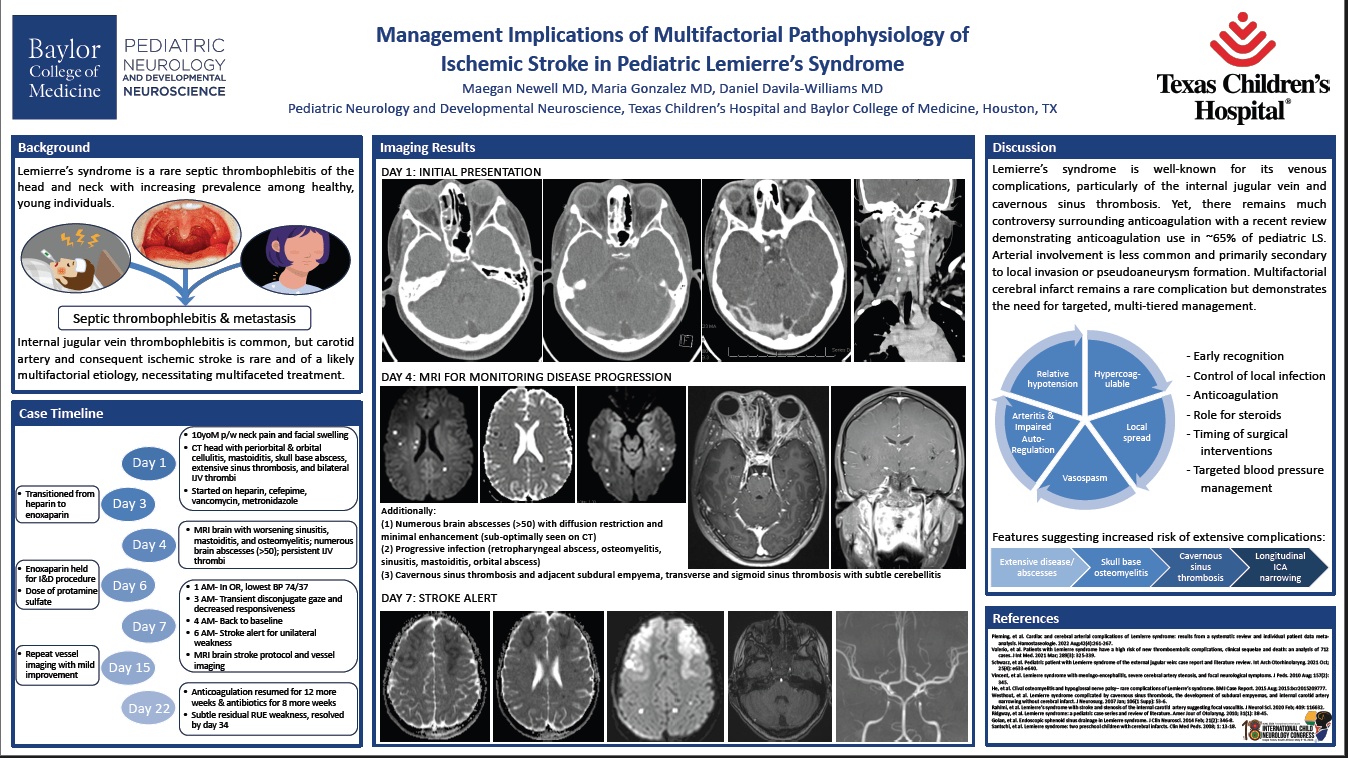Management Implications Of Multifactorial Pathophysiology Of Ischemic Stroke In Pediatric Lemierre’s Syndrome
Introduction: Lemierre’s syndrome is a rare septic thrombophlebitis of the head and neck with increasing prevalence among healthy, young individuals. While internal jugular vein thrombophlebitis is common, carotid artery involvement and consequent stroke is rare in pediatrics. This case demonstrates the multifactorial etiology of complicating stroke with important management implications.
Case Description: A previously healthy 10-year-old male presented with neck pain, swelling, stiffness and fevers following an upper respiratory illness. Initial imaging demonstrated bilateral internal jugular vein thrombophlebitis, bilateral cavernous sinus thromboses, maxillary sinusitis, orbital cellulitis, skull base osteomyelitis, and numerous brain abscesses. Subsequent vessel imaging revealed narrowing of bilateral internal carotid arteries, consistent with arteritis and vasospasm. He was treated with empiric antibiotics and anticoagulation but required anticoagulation reversal for retropharyngeal abscess drainage. During the procedure, he had intermittent hypotension. While recovering from anesthesia, he developed unilateral weakness and horizontal gaze palsy. Brain MRI demonstrated acute ischemic watershed strokes of the bilateral anterior and middle cerebral artery territories.
Discussion: Lemierre’s syndrome, a rare complication of oropharyngeal infection characterized by septic thrombophlebitis, is well-known for its venous complications. There remains much controversy surrounding anticoagulation and the pathophysiology related to uncommon but devastating cerebral infarct. This patient demonstrates a multifactorial etiology for resultant strokes—extensive thrombophlebitis contributing to vasospasm, extensive arteritis impairing cerebral perfusion auto-regulation, and periods of hypotension culminating in bilateral watershed ischemia. While the current literature focuses on the need for therapeutic and preventative anticoagulation, this case demonstrates the simultaneous need for early management of arteritis, vasospasm and hypotension.
Maegan Newell
Baylor College of Medicine
United States
Maria Jose Gonzalez
Baylor College of Medicine
United States
Daniel Davila-Williams
Texas Children's Hospital / Baylor College of Medicine
United States
